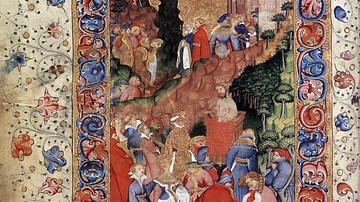Review

| Rating: | |
|---|---|
| Title: | The Global Merchants: The Enterprise and Extravagance of the Sassoon Dynasty |
| Author: | Joseph Sassoon |
| Audience: | General Public |
| Difficulty: | Medium |
| Publisher: | Penguin |
| Published: | 2024 |
| Pages: | 448 |
Appealing to professionals and interested readers alike, "The Global Merchants" is both the story of the rise and fall of a family and a look at the dramatic changes of the 19th and 20th centuries. Joseph Sassoon, a distant relative of the family in question, skillfully weaves together the story of the rise and evolution of both imperialism and capitalism in the manner of a family novel.
Centered around the story of the Sassoons, a Jewish family in Ottoman Baghdad that spanned two continents, this book is not only a family story but also a story of global trade and global capitalism. Although different members of the Sassoon family appear as actors in this story that spans from the beginning of the 19th century to the second half of the 20th century, we also witness major events such as the Industrial Revolution, the American Civil War, the World Wars, Indian Independence, and the Chinese Revolution through these actors. The Sassoons, who dominated the cotton and opium trade in the 19th century, were not the only ones of their kind. However, what distinguished them from their contemporaries and peers was that they served as a bridge between East and West, with family members and companies spanning Shanghai, Bombay, and London.
In 13 chapters, Sassoon tells this story – beginning in Baghdad in 1802 and ending in the Bahamas in 1982 – chronologically and through the geographical distribution of different Sassoon characters. For this reason, the book takes the reader on a very long journey in both time and space. In the first chapter, the author presents the life of the Sassoon family in Baghdad as well as the political and economic background of Baghdad under Ottoman rule. In the second part, we see David Sassoon’s arrival and settlement in India, where he develops his relations with the East India Company and embarks on trade. The third chapter focuses on the Sassoons’ monopolization of the opium trade in India and China with the policy they pursued during the First Opium War and their emergence as global merchants with their dominance in these markets. In the following chapters, with S. D. David’s settlement in England, we read about the efforts of a branch of the family to both enter the arena of high finance and to adapt to British aristocratic life. The author, at this point, argues that the rise of the Sassoons as serious global merchants coincided with the rise of “Free Trade” as a fundamental principle and the central thrust of British politics. After the death of David Sassoon, the family divided its capital and continued its commercial life by establishing different Sassoon companies in different locations. One branch was in China, one in India, and another in England. However, after a while, these companies started to compete rather than cooperate. Especially after the Second World War, the independence of India and the establishment of the Communist regime in China were critical turning points in the economic life of the family companies there.
In the book, we see three major family eras: rise and economic-political success, globalization and fragmentation, and stagnation and decline. This periodization, resembling the traditional reading of the history of empires, is something Sassoon consciously employs as he treats the Sassoons as a mercantile dynasty. The reasons behind the Sassoons' initial success and eventual downfall are examined thoroughly. The author particularly emphasizes the trust the Sassoons instilled in the people or countries they worked with, along with the reputation they gained as a result. Additionally, their commitment to British colonial interests, the information networks they established through their agents in India and China, and the rise of global trade and commodity prices in the second half of the nineteenth century also contributed to their success. However, Sassoon points out that the source of the collapse was also within the system of their creation. The independent branches pursued their own interests and even had a devastating effect through intra-family rivalry. With the adoption of the British aristocratic life, especially for the branch of the family in England, wealth was spent on sustaining this life, time spent on work was reduced, and an English gentlemanly lifestyle was adopted. Sassoon observes that this lifestyle ultimately undermined capitalist industriousness, reminiscent of the analysis found in Peter J. Cain and A. G. Hopkins’ British Imperialism 1688-2015 (2016).
The author includes over 60 illustrations, maps, and photographs in the book, and they help readers to contextualize the family better. Joseph Sassoon, who currently teaches in the History Department at Georgetown University and is highly respected and cited for his work on the Arab World, is a novel-like resource for readers interested in understanding both the rise and fall of European imperialism during the 19th and 20th centuries and the expansion of the networks of global capitalism through an agent like the Sassoon family.
About the Reviewer
Cite This Work
APA Style
Bulkan, B. (2024, March 08). The Global Merchants: The Enterprise and Extravagance of the Sassoon Dynasty. World History Encyclopedia. Retrieved from https://www.worldhistory.org/review/400/the-global-merchants-the-enterprise-and-extravagan/
Chicago Style
Bulkan, Burak. "The Global Merchants: The Enterprise and Extravagance of the Sassoon Dynasty." World History Encyclopedia. Last modified March 08, 2024. https://www.worldhistory.org/review/400/the-global-merchants-the-enterprise-and-extravagan/.
MLA Style
Bulkan, Burak. "The Global Merchants: The Enterprise and Extravagance of the Sassoon Dynasty." World History Encyclopedia. World History Encyclopedia, 08 Mar 2024. Web. 02 Apr 2025.




